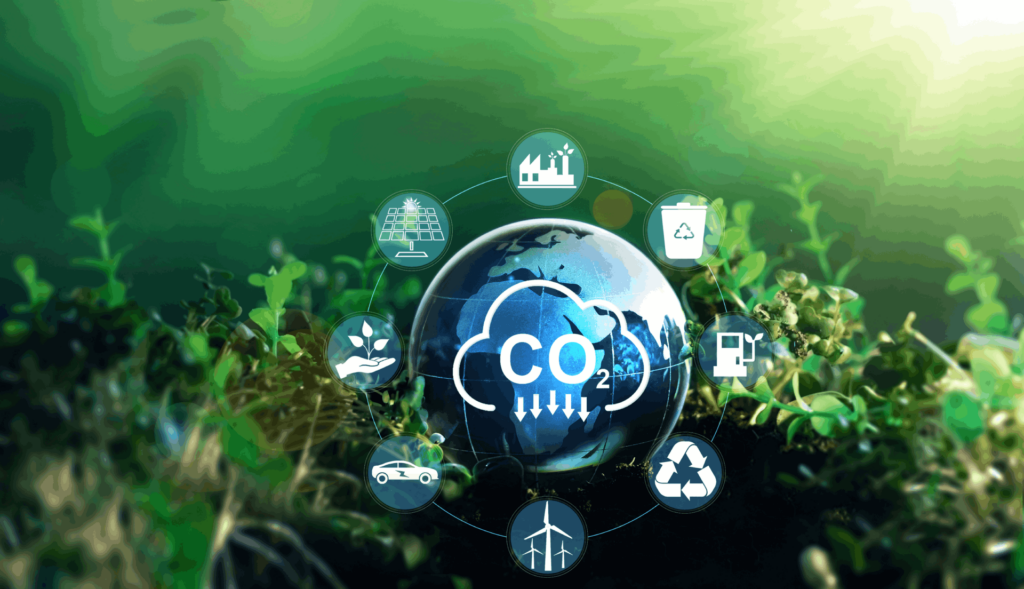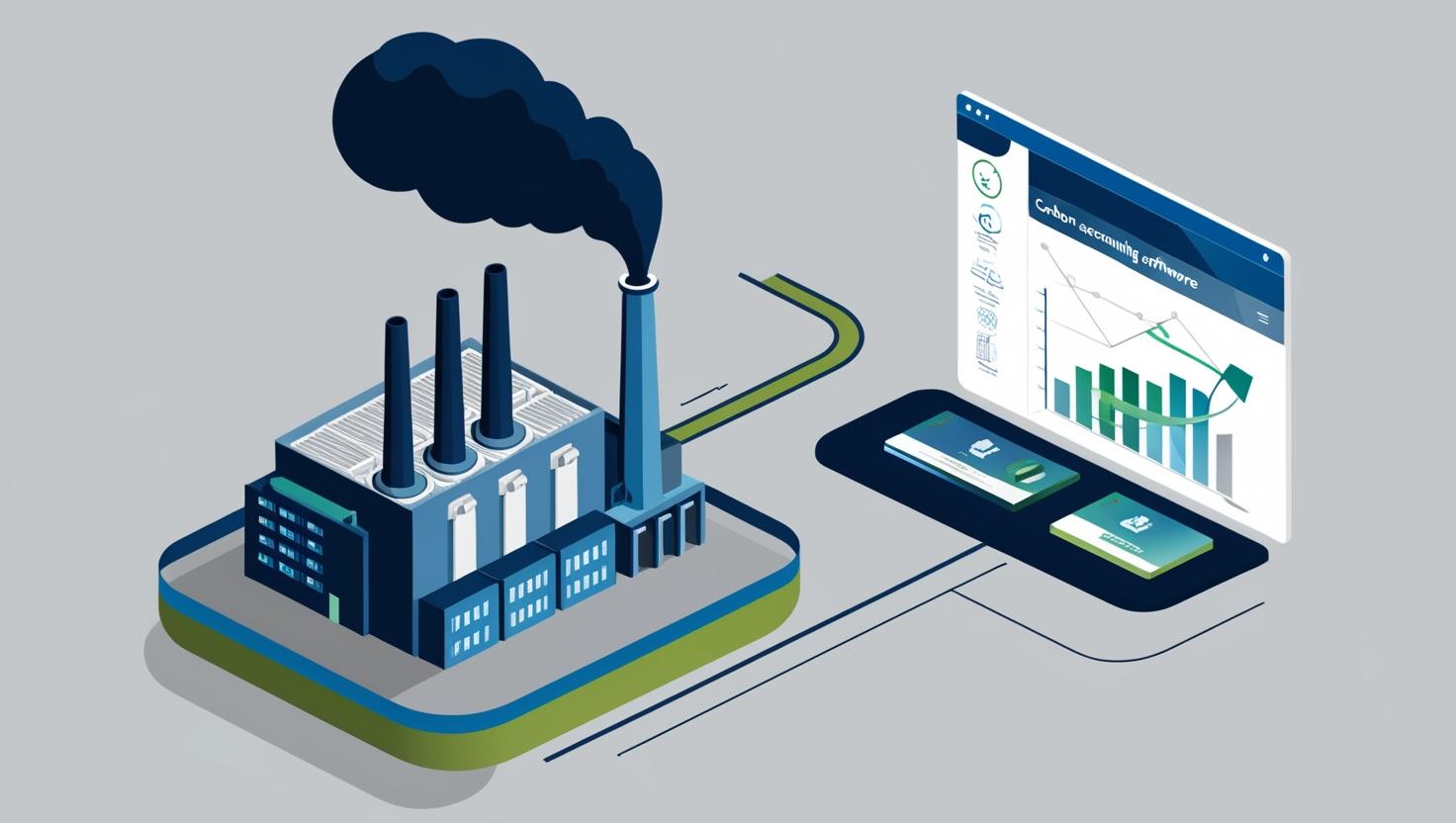Recognize the fact that fossil fuels are the main driver of global warming-induced climate change. As per the data at hand, the consumption of fossil fuels account for 89% of all CO2 emissions and 68% of total Greenhouse Gas(GHG) emissions.
The result of this climate change is erratic weather conditions which are excessive drought, floods, landslides in hilly places, and rise of sea level due to melting of polar ice. The situation is critical at present and we are already experiencing the havoc of these natural calamities. And the right course of action, if not taken on time, will definitely make the situation worse than ever.
Fortunately, the solution for the aforementioned problems lies in the process called Carbon Accounting.
So in this article, we’ll look at what exactly is carbon accounting, how it’s done, and a lot more details surrounding the topic.
What is Carbon Accounting?
Carbon accounting is a process that aims to calculate or quantify how much carbon a company emits. This is also known as Carbon or Greenhouse Gas accounting. This information will help to estimate how much carbon or greenhouse gas industry can release more into the atmosphere, which will ultimately help in taking measures to reduce those emissions.
Carbon Accounting in Regulation
Across the industries around the world, Carbon Accounting is now becoming a standard or a must-to-do procedure. You are required to mention the GHG reporting in your various kinds of official documents like the director’s report, shareholder and stakeholder communication, and business contracts.
In UK
Like in the United Kingdom, the government there mandated around 1100 companies listed on London Stock Exchange to report their GHG emissions every year. The announcement of this regulation came in June 2012 and the rule came into effect in April 2013.
In US
In the United States, it was the incident of the Deepwater Horizon Oil Spill that initiated the program of Greenhouse Gas Reporting by the US Environmental Protection Agency in 2010. The program later became law in the same year and required 85% of the major emission-producing industries to report their GHGs.
Why Carbon Accounting?
The process of Carbon Accounting will help us in the following two ways:
1. To tackle Climate Change
We know that our earth is getting warmer day by day – the phenomenon is known as Global warming. Global warming is causing the rise in sea levels due to the meltdown of polar ice which ultimately increases the risk of floods and cyclones, especially in coastal areas.
Recognize that if we want to prevent a 2 degrees rise in earth’s temperature from the present, then we have to reduce the carbon footprint of an individual to 2 tons of CO2 per year which currently stands at 4 tons of CO2 per year.
The uneven warming of the earth is also responsible for climate change that in turn is causing erratic weather conditions like drought, floods, landslides, storms, etc.
So, to tackle the above challenges, carbon accounting has the role to play, as it provides information that’ll become a basis for understanding and managing climate change impacts.
2. To trade Carbon Credits
Carbon Accounting also helps in creating carbon credits that are traded on Carbon Markets.
The Carbon market is a place where carbon emission trading i.e sale and purchase of carbon in the form of carbon credits happens. The idea of Carbon Markets and their trading originates at the Kyoto Protocol of 1997. And it works as what is called Cap and Trade scheme at national and international levels.
Under this scheme, also known as Emission Trading Scheme(ETS), an overall cap or a limit is set on the emissions companies can emit as per their industrial sectors and other criteria. The emission limits are then provided to companies in the form of carbon credits either free of cost by the government, or via auction.
How is carbon accounting done?
The instructions or guidelines for accounting for carbon emissions for corporations have been devised by the regulatory organization’s World Resources Institute(WRI) and World Business Council for Sustainable Development(WBCSD) altogether and are named – The Greenhouse Gas Protocol(GHG Protocol).
The protocol by the two aforementioned organizations mainly provides instructions for organization and project-level emissions. And in the case of managing national-level emissions, the regulatory body named Intergovernmental Panel on Climate Change(IPCC) has a role to play.
Also, the International Organization for Standardization – ISO also provides guidelines for emission control and its accounting for various levels. It has the standard ISO 14064 – 1 for GHG emissions at the organizational level, ISO 14064 – 2 for project-level emissions, and the ISO 14064 – 3 standard to validate and verify the relevant accountings.
What is GHGP and its 3 scopes?
Here, we’ll be talking briefly about the scopes of the GHG protocol prepared by WRI and WBCSD. And the protocol has the following three scopes.
Scope 1
Scope 1 covers all direct GHG emissions released by a company.
This includes fuel combustion in boilers, furnaces, company vehicles, and fugitive emissions. So, these emissions are direct emissions that result from sources owned or controlled by an organization.
Scope 2
Scope 2 of this protocol covers indirect GHG emissions.
The indirect emissions are those that result from a company’s activities but that occur outside a company’s physical facility. For example, the electricity purchased by an organization for heating, cooling, or steam generation purposes is responsible for harmful and undesirable emissions at the power plant utility.
Recognize the fact that the Scope 2 emissions are responsible for at least one-third of global GHG emissions due to the high demand for and consumption of electricity.
So, keeping this in mind, the GHG Protocol has issued standardized guidelines on how an organization can calculate its Scope 2 emissions to ensure transparency and consistency between organizations. And for that, the Corporate Standard guidelines “recommends multiplying activity data ( i.e. MWh of electricity consumption) by source and supplier-specific emission factors to arrive at a value that’ll give us the implant of GHG emissions arising due to electricity use.
Scope 3
Scope 3 covers other indirect emissions, such as the extraction and production of purchased materials and fuels, transport-related activities in vehicles not owned or controlled by the reporting companies, electricity-related activities – e.g. transmission and distribution (T&D) losses – which is not covered in Scope 2, outsourced activities, waste disposal, etc.
Scope 3 emissions are also called value chain emissions and they often represent the largest source of greenhouse gas emissions. In fact, in some cases, they can account for up to 90% of the total carbon impact occurring due to industries. So, the largest part of a typical corporate GHG footprint lies in the company’s value chain.
Scope 3 emission sources include emissions both upstream and downstream of the organization’s activities (e.g. suppliers, product use, and transportation of goods).
Calculation Tools by GHG Protocol
The GHG protocol doesn’t leave us by preaching some standard guidelines and instructions but it also provides many calculation tools to estimate the GHG emissions for planning and action-taking.
The various GHG Calculation tools can be navigated on the following bases:
- Cross-sector Tools: These tools can be used to various sectors and industries across all countries of the world.
- Country-specific Tools: Tools here are country specific tools i.e. used for a particular country.
- Sector-specific Tools: Tools created for a particular sector.
- Tools for countries and cities: Tools devised for countries and cities to track their climate goals.
You can view or use all the GHG protocol tools at their official website: https://ghgprotocol.org/calculation-tools.
Reference
To know in-depth details on Carbon Accounting and its reporting principles, you can refer to this official guideline document prepared by WRI and WBCSD – A Corporate Accounting and Reporting Standard.
LogicLadder Inc – Who are we?
We at LogicLadder are providers of enviro monitoring solutions viz energy monitoring systems, water monitoring systems, and stack emission monitoring systems. Our IoT-based systems allow industries to monitor their environmental parameters in real-time enabling them to take necessary action when required and also to comply with government regulations.




